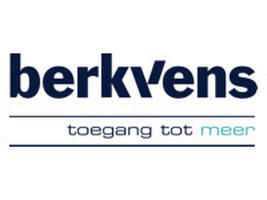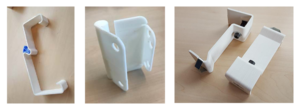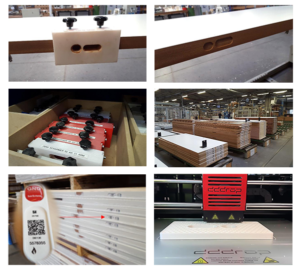
At Berkvens Door Systems, the entire production process takes place in-house: from idea to product, from research and development to production. Since the beginning of 2017, the dddrop 3D printer has been a part of this process, which has yielded unexpected benefits. Although the printer was purchased to produce parts for the end product, the Berkvens engineers are constantly discovering new applications for their dddrop 3D printer. In addition, dddrop helps them save time and expenses on prototyping and tooling.
Berkvens Door Systems is the market leader in total solutions for sustainable interior doors, door frames and sliding door systems. Innovative, progressive and always looking simplify the user experience. Upon entering the production hall of Berkvens, it is clear that the production happening at full speed. Every section has its own specification, each department contributes its piece of the puzzle to a complete the end product. From processing to coating, from attaching door fittings and locks to packaging.
Technical Product Development Engineer Eddy Hoebergen has been responsible for the 3D printer since the acquisition of the dddrop. Searching for a 3D printer was not at top priority. The company purchased the printer to produce covers for the styles of the new Verdi frames. “The dddrop has grown into a machine that is used for all kinds of applications. Indispensable! “, Says Eddy.
Fast Prototyping Utilizing 3D Prints
Now that the printer is on the production floor, the team can experiment with new designs. Eddy and his colleagues are responsible for technical product development. When designing new products, it is important to be able to quickly translate from a screen to a tangible model. Using the dddrop 3D printer, prototypes are made at a speed that is incomparable to the outsourcing of 3D printing. Being able to produce tangible products rapidly, and optimizing the design along the way is an important process in product development. Now that this takes place entirely in-house, different design options can be tested quickly, resulting in an optimal final design.

Prototyping is just one of the phases in the production process in which the dddrop is being used. The 3D prints also support as tooling during production, in the form of drilling and milling molds. The clamps indicate where different operations must be performed on the materials. Berkvens purchased milling and drilling jigs in the past through tool makers and another part that could process MDF and aluminum. For the external production of the mold, they had to pay € 400 on average, which meant that the tooling costs could run high. A good reason to investigate whether the dddrop 3D printer could play a role in different segments of the business.
Savings in Costs and Time
Today all milling and drilling templates are 3D printed, in-house. This results in a considerable saving in time because outsourcing and delay time for delivery are no longer an issue. However, that is not the main benefit: when examining cost, a saving of more than 75 percent has been achieved. “We use around 100 molds productively. Multiply this by 400 euros and I don’t have to explain to you what kind of capital is in our closet, “Eddy says laughing. “At the moment the costs per mold, including depreciation, energy costs, and man-hours, are around 25 euros”.

What started as a test for the manufacture of cover caps has grown at Berkvens into a functional machine for prototyping, production tooling, and end products that are actually assembled in numerous doors. With 500,000 doors and frames per year, delivered completely from A to Z, Berkvens can be proud as a company.
